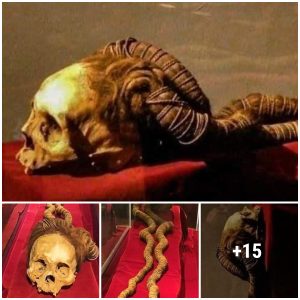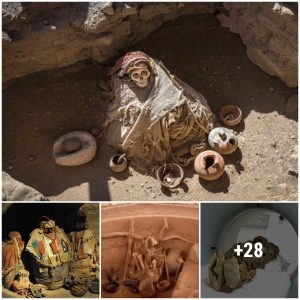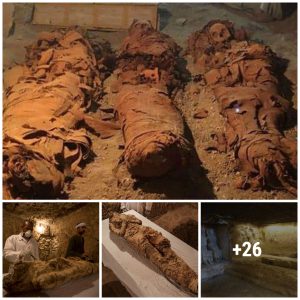Archaeologists digging at a Neolithic settlement site in Vrable, western Slovakia have unearthed a mᴀss grave containing the headless remains of around three dozen people.
The Vráble site is one of the largest Stone Age settlements in Central Europe to have been excavated to date. Experts believe that the occupants of the grave may have been killed in cult ceremonies!

The 50-hectare (123-acre) Vráble site dates to between roughly 5250 and 4950 BC and has yielded much interesting evidence about the Neolithic Age in Central Europe. But the mᴀss grave is the most dramatic discovery so far.
Unsettling Discovery at Vráble’s Neolithic Settlement
The site consists of three settlement areas where excavations and geophysical surveys have taken place over the past seven years.

The work was performed by a German-Slovak archaeological team and so far, has revealed more than 300 longhouses. The joint team consists of experts from the Insтιтute of Archaeology of the Slovak Academy of Sciences (SAV) and the Christian Albrechts University in Kiel.
The longhouses were built at different historical settlement stages and the archaeologists say an estimated 50-60 houses would have been in use at any given time, reported the Slovak Spectator .
One of the three settlement areas during the final phase of occupation was fortified with at least one defensive ditch and a palisade.
This particular settlement had six entrances in its defensive perimeter, and it was this one that yielded the headless, mᴀss Vráble Stone Age grave site.

According to Archaeology, Zuzana Hukelová of the Slovak Academy of Sciences stated that the skeletons were discovered in a ditch near one of these six entrances. Individual graves had been discovered by the team previously in and around the ditch.
The Vráble Stone Age Grave of Scattered Headless Skeletons!
It was during excavations conducted in 2022 that archaeologists found the mᴀss grave in a long ditch near one of the six entrances to the Vráble Stone Age settlement.
The grave contained the remains of 35 individuals who, experts conclude, may have been victims of cult sacrifice . The bodies seem to have been thrown into the grave in a haphazard manner with the skeletons on their backs, sides, fronts, with arms and legs outstretched as if they were frogs.
Men, women, and children were buried in the grave but a good number of them appear to have been adolescents and young adults. The skull of one child and a jaw mandible were the only head bones found, indicating that the heads were likely separated from the bodies.
The bones showed clear signs of perimortem fractures ( meaning at or near the time of death). In perimortem injuries there is zero evidence of healing.
The grave also contained part of a sled.
Further Investigations Will Tell Us More . . .
While human sacrifice is one of the possible explanations for the headless bodies in the mᴀss grave, only further tests will clearly establish the cause or causes of death.
The tests will seek to discover whether the occupants of the grave died separately or at the same time and whether they were victims of an epidemic or of cult rituals.
Experts will also examine if there are any genetic links between the individuals. Further, they will explore how the heads were removed, or if they could have completely decomposed in the grave.
Experts are hopeful that the tests will provide wider insights about the inhabitants of the Neolithic site as well.
The Slovak Spectator quoted Matej Ruttkay, the director of the Insтιтute of Archaeology as saying, “Only then will we be able to answer several questions about the social categorisation of the [site’s] inhabitants, probably also about the emerging social inequality in the conditions of early agricultural societies, and perhaps even reconstruct the functioning or the causes of the demise of this vast settlement.”
The Vráble Stone Age grave site has been a remarkable source of evidence about Neolithic Central Europe. Some of the Vráble finds are unique to the site. Ivan Cheben, head of archaeological research at the Slovak Academy of Sciences, said:
“In the final stage of operation, one of the areas was fortified with a moat with six entrances to the settlement, which was doubled by a palisade.
This was absolutely exceptional in Central Europe at that time. We also confirmed the presence of more than 300 longhouses through a detailed geophysical survey. It is possible that 50 to 70 houses could have been used at the same time in the individual stages of the settlement’s functioning.”
Investigations at Vráble are by no means over. History enthusiasts can certainly look forward to more exciting Neolithic Age finds from the Vráble Stone Age grave and settlement site in western Slovakia.





